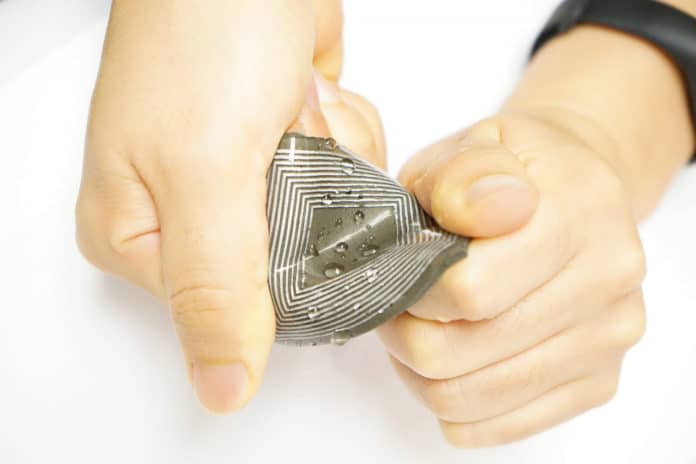There have been ongoing efforts to make wearable generators that harvest energy from human body movements to power sensors and other devices, but the lack of practicality has hindered such progress.
Now, bioengineers at the UCLA Samueli School of Engineering have invented a novel soft and flexible self-powered bioelectronic device that converts human body motions into electricity that could be used to power wearable and implantable diagnostic sensors.
While the piezoelectric devices generate an electrical current when squeezed or pressed, the new bioelectric device utilizes magnetoelastic effect – the variation of the magnetic properties of a material under mechanical stress – which is usually observed in rigid alloys, whose mechanical modulus is significantly different from that of human tissues, thus limiting their use in bioelectronics applications. However, the team has now observed that it can exist in a soft and flexible system – not just one that is rigid.
The researchers built a small, flexible magnetoelastic generator made of a platinum-catalyzed silicone polymer matrix and neodymium-iron-boron nanomagnets. They then attached it to the subject’s elbow with a soft, stretchy silicone band and the observed magnetoelastic effect was four times greater than similarly sized setups with rigid metal alloys. As a result, according to the team, the device generated electrical currents of 4.27 milliamperes per square centimeter, which is 10,000 times better than the next best comparable technology.
The flexible magnetoelastic generator is sensitive enough to convert human pulse waves into electrical signals and act as a self-powered, waterproof heart-rate monitor. The electricity generated can also be used to sustainably power wearable devices, such as a sweat sensor or a thermometer. In addition, the UCLA team’s novel wearable magnetoelastic generators tested well even after being soaked in artificial perspiration for a week.
“Our finding opens up a new avenue for practical energy, sensing and therapeutic technologies that are human-body-centric and can be connected to the Internet of Things,” said the study leader Jun Chen, an assistant professor of bioengineering at UCLA Samueli. “What makes this technology unique is that it allows people to stretch and move with comfort when the device is pressed against human skin, and because it relies on magnetism rather than electricity, humidity and our own sweat do not compromise its effectiveness.”
